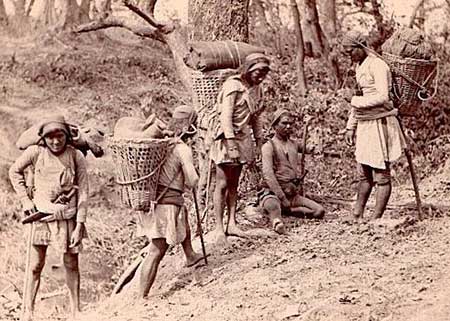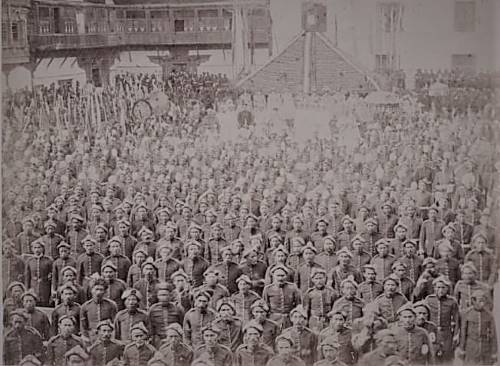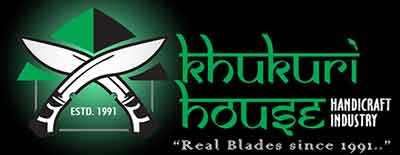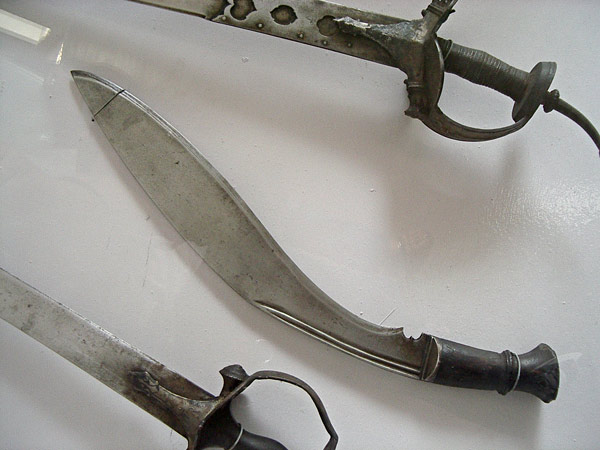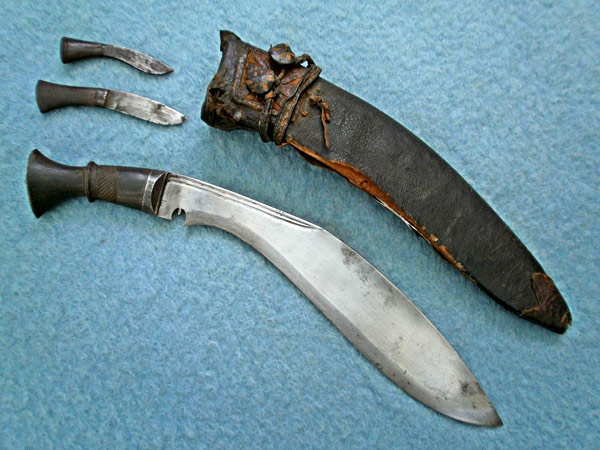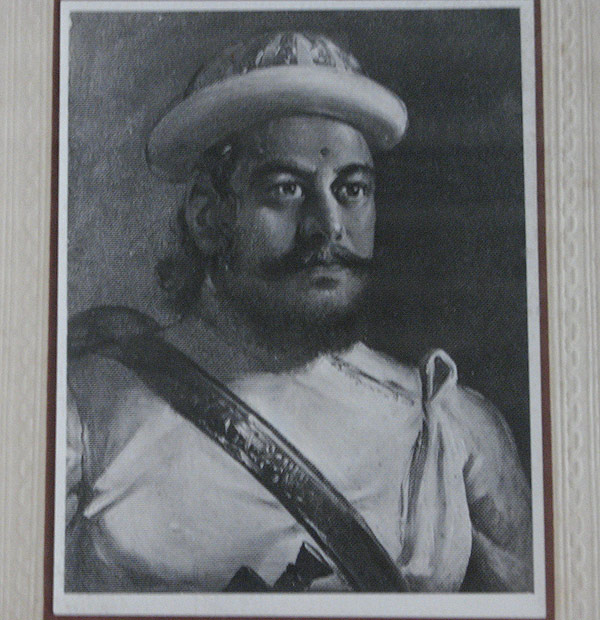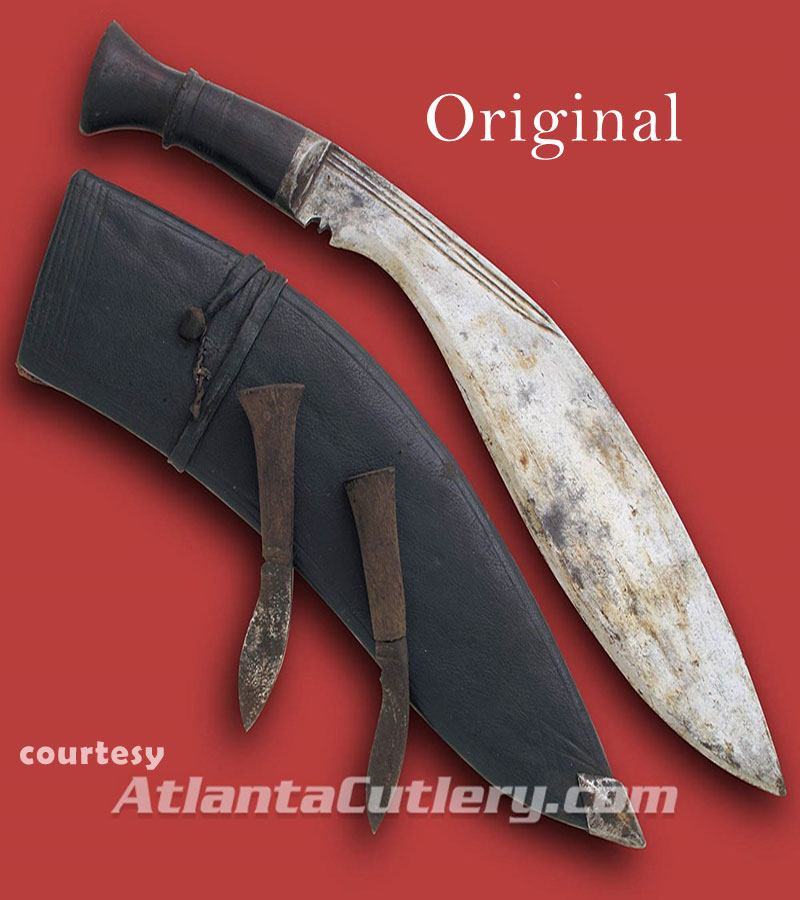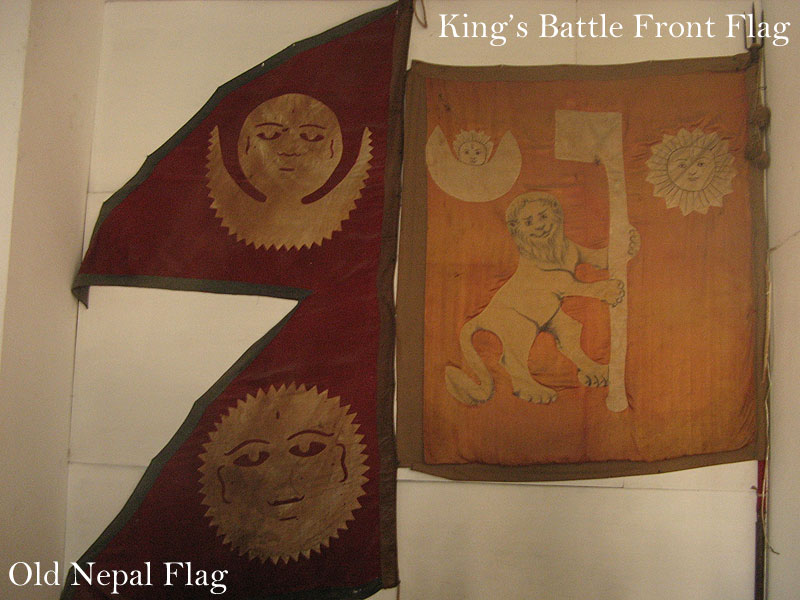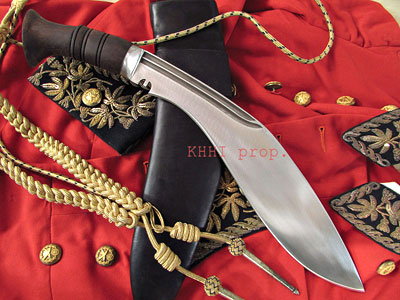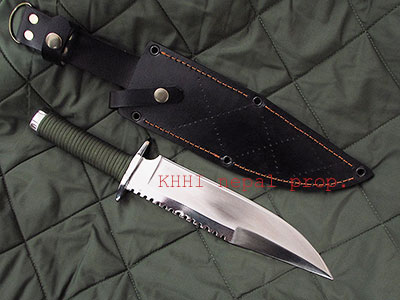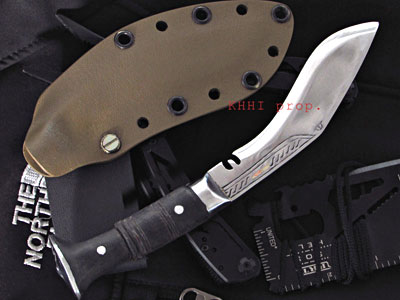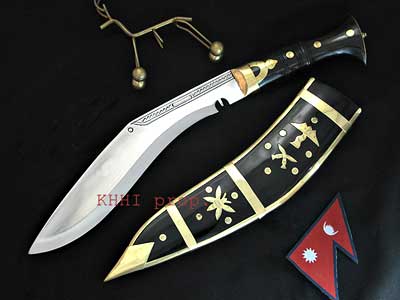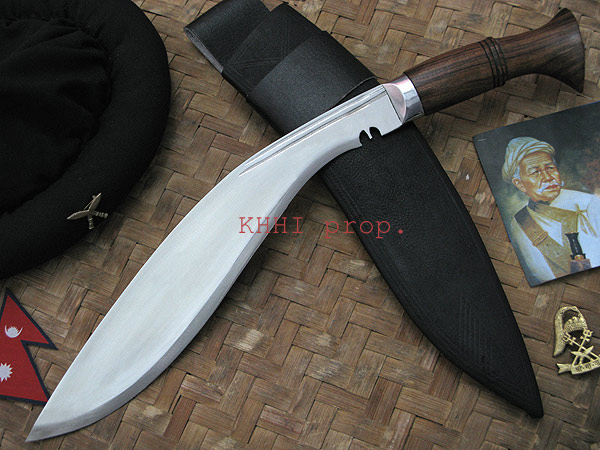
AITIHASIK (Gorkhali Sainik)
The replicated version in style, shape and size of the original kukri that was issued to the "Gorkhali Army" in the 18th century..
Delivery: Estimated between May 26, 2024 and Jun 05, 2024
Item Location: Nepal
Default Specification
- Blade Size (in): 13
- Handle Size (in): 4.5
- Handle Material: Rosewood
- Actual Weight (gm): 625
- Overall weight (gm): 835
- Shipping weight (gm): 1250
- Blade finishing: Unpolished
- Blade sharpness: Standard (very sharp)
- Blade material: 5160
- Place of Origin: KHHI, Kathmandu, Nepal
- Accompanying knives/B-up: None
- Blade thickness (mm): 8
- Handle finishing: Polished
- Sheath: Special treated buffalo leather scabbard
- Tang type: Stick
- Fixture: Iron
- Edge grinding: Semi convex
- Edge Hardness: 55-57 hrc
- Blade (panel) Grinding: Full Flat
- Function: Gift, Military, Outdoor, Combat, Collection, Regular Work
AITIHASIK (Gorkhali Sainik) khukuri; the 1st Nepali knife ever documented.. the knife British really feared
"Aitihasik" meaning 'historic' or 'antique' is the legend of all khukuris that has a proud historic significance in Nepal. It is actually the replicated version in style, shape and size of the original kukri that was issued to the “Gorkhali Army” in the 18th century. The Gorkhali Paltan (Army) or famously known as the “Gorkhas” is the first recognized and 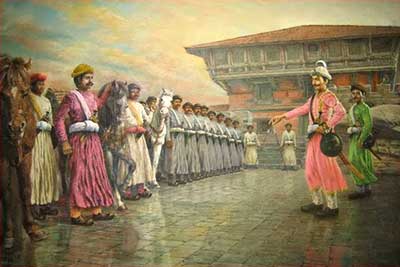 documented Arm Force of Nepal that was started by King Prithivi Narayan Shah from Gorkha who went to war with a mission to unite all scattered kingdoms into one. The strong military force armed with khukuris, spears, swords and few pump guns conquered all kingdoms and united them into one kingdom, one nation in 1768 AD, which later became Nepal. The Gorkhali Army not only united Nepal but also prevented the British from invading the country who had already taken over India then. Its history dates back to late18th century when Gorkhali Sainik led by the king and many of his successful army generals initiated the national campaign of expanding its boarders far and further. Soldiers in the battle carried the khukuri for both reasons, as a main weapon and as a back up weapon in their armory. The famous battle of “Nalapani” in Deheradun of India, commanded by the great general Balbhadra Kunwor from the Gorkha’s side, witnessed the Aitihasik khukuri in full action, swinging and slaughtering the British, proving it as a lethal and decisive weapon in the hand of a Gorkha (Gorkhali Sainik / soldier).
documented Arm Force of Nepal that was started by King Prithivi Narayan Shah from Gorkha who went to war with a mission to unite all scattered kingdoms into one. The strong military force armed with khukuris, spears, swords and few pump guns conquered all kingdoms and united them into one kingdom, one nation in 1768 AD, which later became Nepal. The Gorkhali Army not only united Nepal but also prevented the British from invading the country who had already taken over India then. Its history dates back to late18th century when Gorkhali Sainik led by the king and many of his successful army generals initiated the national campaign of expanding its boarders far and further. Soldiers in the battle carried the khukuri for both reasons, as a main weapon and as a back up weapon in their armory. The famous battle of “Nalapani” in Deheradun of India, commanded by the great general Balbhadra Kunwor from the Gorkha’s side, witnessed the Aitihasik khukuri in full action, swinging and slaughtering the British, proving it as a lethal and decisive weapon in the hand of a Gorkha (Gorkhali Sainik / soldier).
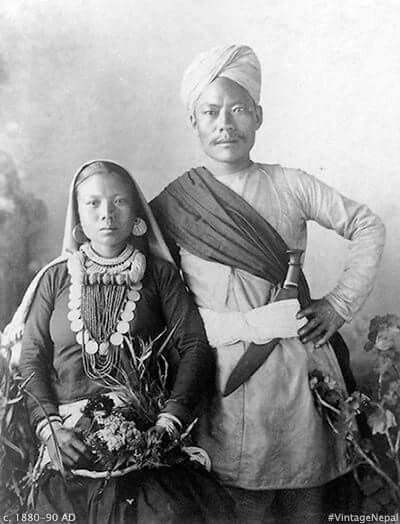 This AITIHASIK (Gorkhali Sainik) is original gorkhali khukuri that was heavily used in the history of Nepal by the real Gurkhali Army. This gurkha khukuri resembles the histroy and glory of Nepal; many wars that the brave gorkha people fought for the unification of Nepal and beyond. This kukri knife is also known by multiple names such as gurka knife, ghurka knife, gurkhas knife, gorkha khukuri that was used as military gurkha kukris. With this fact we can proudly say that its the authentic Nepali kukri used by the Gorkhali Sena in many Gorkha wars fought by the house of Gorkha against the British East India Company and other small kingdoms. This khukuri played such a vital and successive role in world history that at later stage Gorkhas and Kukris were forever inter-linked to one another as synonyms; the flesh and blood sort of relation.
This AITIHASIK (Gorkhali Sainik) is original gorkhali khukuri that was heavily used in the history of Nepal by the real Gurkhali Army. This gurkha khukuri resembles the histroy and glory of Nepal; many wars that the brave gorkha people fought for the unification of Nepal and beyond. This kukri knife is also known by multiple names such as gurka knife, ghurka knife, gurkhas knife, gorkha khukuri that was used as military gurkha kukris. With this fact we can proudly say that its the authentic Nepali kukri used by the Gorkhali Sena in many Gorkha wars fought by the house of Gorkha against the British East India Company and other small kingdoms. This khukuri played such a vital and successive role in world history that at later stage Gorkhas and Kukris were forever inter-linked to one another as synonyms; the flesh and blood sort of relation.
The glory of Gorkha, Gorkhas and Khukuri started from this era…
Khukuri House (KHHI) and the AITIHASIK (Gorkhali Sainik) Kukri
KHHI has always been on the top notch in making the original Nepali Kukri. We have given our best to keep its originality both in design and quality. This historic kukri was made to show the importance and glory of kukri. Few things you need to know about this gorkhali kukri from Nepal.
- The khukuri has unpolished blade to resemble the originals
- The khukuri has two straight fullers to resemble the originals
- The shape of the blade is forged wider towards the head/upper portion, done for better swing and force
- The wooden handle is slightly curved towards the end for easier and better grip
- The scabbard is made from special buffalo hide with embossing and patterns overlaid
- Tip or Kothi is discarded in the scabbard, unlike the regular ones. This absence gives the feeling of originality and a look of very traditional khukuri.
- Also designed as a solid jungle utility knife like a machete
Size of Blade: 13 inches approx.
Materials / Features: Special treated buffalo leather scabbard, Rosewood handle
The Warrior Tribes; are the men who mainly joined the Gorkhali force and laid the foundation of the Gorkha raj...
Rai, Limbu, Sunuwars, Magar and Gurung are called the warrior tribes of the Gurkha clan. They are the direct and indirect decedents of the Kirati caste that entered Nepal in around 12th BCE from South-East plains of China and ruled Nepal from 8th BCE to 3rd CE after toppling the Maheshpal dynasty. King Yalamber was the 1st king of Kirat dynasty. These people are mainly short in stature, have small physique and Chinese-like features and live mainly in the hills and mountains. They worship nature, their ancestors and most follow Shivaism. The difficult terrains, very hard life and the inborn survival instinct make them very tough soldiers. Kiratis have always been the backbone of army of any dynasty that came to power in Nepal.
